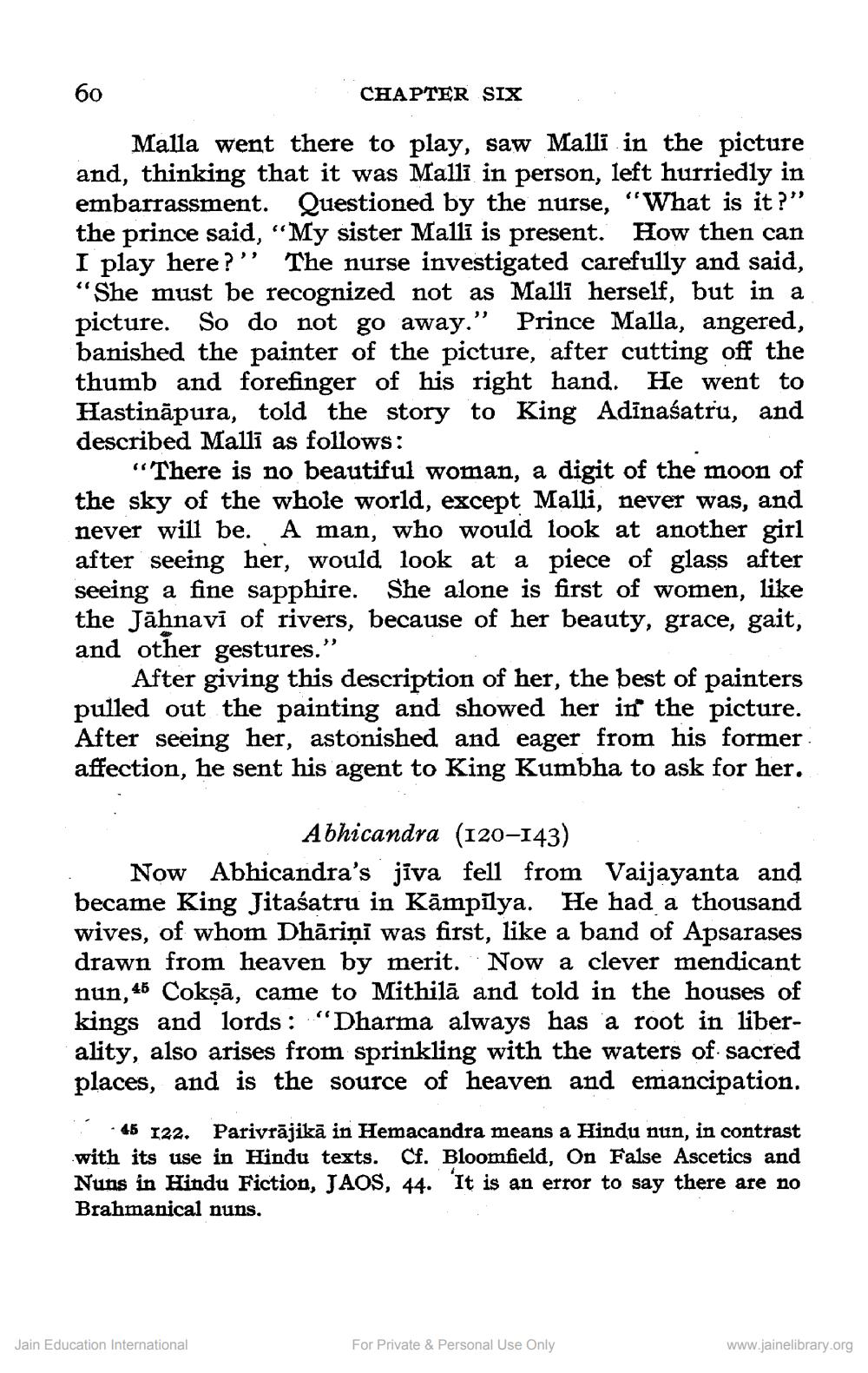________________
60
CHAPTER SIX
Malla went there to play, saw Malli in the picture and, thinking that it was Malli in person, left hurriedly in embarrassment. Questioned by the nurse, "What is it?" the prince said, “My sister Mallī is present. How then can I play here?” The nurse investigated carefully and said, "She must be recognized not as Malli herself, but in a picture. So do not go away.” Prince Malla, angered, banished the painter of the picture, after cutting off the thumb and forefinger of his right hand. He went to Hastināpura, told the story to King Adinaśatru, and described Mallī as follows:
"There is no beautiful woman, a digit of the moon of the sky of the whole world, except Malli, never was, and never will be. A man, who would look at another girl after seeing her, would look at a piece of glass after seeing a fine sapphire. She alone is first of women, like the Jāhnavi of rivers, because of her beauty, grace, gait, and other gestures."
After giving this description of her, the best of painters pulled out the painting and showed her in the picture. After seeing her, astonished and eager from his former affection, he sent his agent to King Kumbha to ask for her.
Abhicandra (120–143) Now Abhicandra's jīva fell from Vaijayanta and became King Jitaśatru in Kämpīlya. He had a thousand wives, of whom Dhāriņi was first, like a band of Apsarases drawn from heaven by merit. Now a clever mendicant nun, 45 Coksā, came to Mithilā and told in the houses of kings and lords: “Dharma always has a root in liberality, also arises from sprinkling with the waters of sacred places, and is the source of heaven and emancipation.
-45 122. Pariyrājikā in Hemacandra means a Hindu nun, in contrast with its use in Hindu texts. Cf. Bloomfield, On False Ascetics and Nuns in Hindu Fiction, JAOS, 44. It is an error to say there are no Brahmanical nuns.
Jain Education International
For Private & Personal Use Only
www.jainelibrary.org




